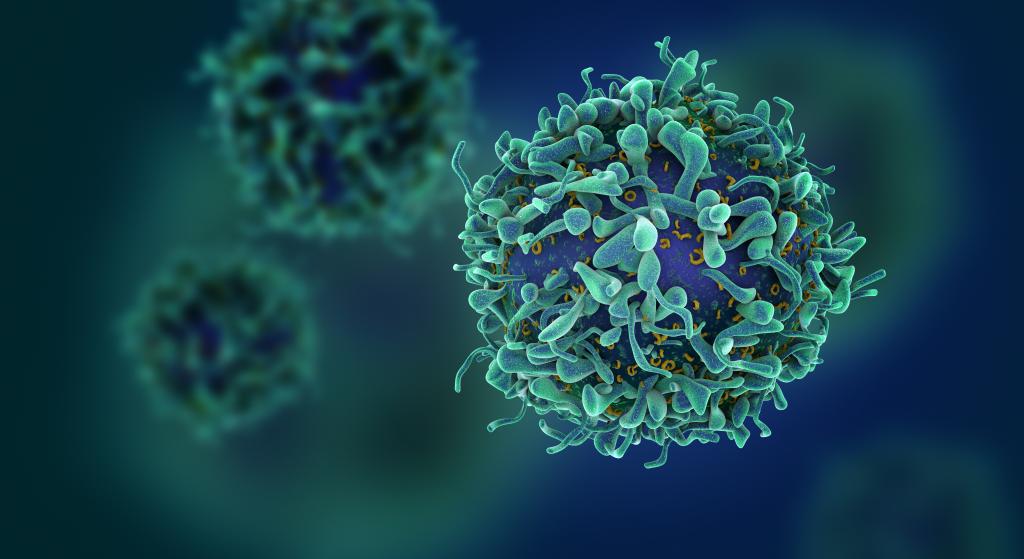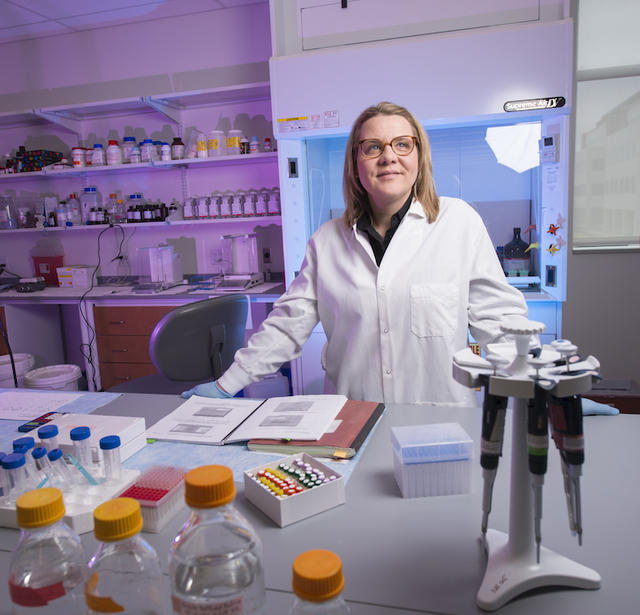Admission CTAs
Personalizing breast cancer treatments with multi-omics
George Mason University researchers Emanuel Petricoin and Mariaelena Pierobon lead personalized breast cancer trials that are extending patients’ lives and generating data that can be used by other cancer researchers to test their hypotheses.
The protocol for the team’s trials is peerless because it is truly personalized cancer treatment. The clinical trials involve taking a biopsy from the patient’s tumor and analyzing its DNA, transcripts, proteins and protein activity. This approach is called “multi-omics” because it combines molecular data collected through the use of different cutting-edge technologies and provides a more complete picture of how the tumor cells are operating. Treatment can then be recommended based on the characteristics of an individual’s tumor, rather than a “one-size-fits-all” approach.
“As individuals, we are different, and we experience disease differently,” said Pierobon, research associate professor at School of Systems Biology and Center for Applied Proteomics and Molecular Medicine (CAPMM) in Mason’s College of Science.
Thinking on the scale of an individual patient can help researchers and doctors not only improve the effectiveness of treatment, but also minimize the negative side effects of treatment, which can be debilitating.
Funding for the trials comes from the Side-Out Foundation, which was created in 2004 by volleyball coach and Mason alumnus Rick Dunetz, BIS ’97. The term “side-out” refers to a volleyball team regaining control of the ball during the opponent’s serve. The foundation’s goal is to help people with breast cancer similarly regain control of their lives.
Volleyball teams help raise money for this research by hosting Dig Pink® matches or tournaments and fundraising with friends, family and fans. A dig is a move that keeps a hard-driven ball hit by the other team from hitting the floor and requires quick movement and potentially diving, rolling or sprawling. According to the Side-Out Foundation, participants are pushing themselves to perform these difficult plays in order to honor the people whose lives have been made difficult by their illness.
To date, roughly $14 million has been raised for research through the participation of more than 9,000 volleyball teams, according to Side-Out’s website. The community funding for cancer research is distinctive from the more traditional federal grants and national foundations.
“One of the unique aspects of this partnership is the relationship we have built over the years not only with excellent scientists and physicians, but also with volleyball coaches, fundraisers, and of course the foundation,” Pierobon said. “It has been an extremely rewarding journey.”
The volleyball funds have been used to not only develop a new cancer research and treatment protocol, but to implement it. The first two clinical trials involved 50 patients, while the third is currently recruiting 100 patients. The trial locations are local and nationwide, including partnerships with Thomas Jefferson University, Virginia Cancer Specialists, University of Miami, University of Washington and Yale Cancer Center.
Pierobon showed that personalized treatments can provide clinical benefit for breast cancer in approximately 50 percent of the patients.
“This translates into patients being with their families for longer, being present at their children’s graduations and creating other milestone memories,” Pierobon said.
The data collected during the trials is also helping other researchers test their cancer hypotheses through an open-access repository.
“We have developed the first web-based, publicly accessible database portal where broad multi-omic profiles are captured from the metastatic breast cancer patients along with demographic, clinical and pathological data,” said Elisa Baldelli, research associate in CAPMM and contact for the database. “This open-access portal represents a unique and highly valuable tool.”
Pierobon’s research is complemented by several other Mason researchers working on breast cancer, including:
- Kathryn Jacobsen, College of Health and Human Services, who studied communication about breast cancer on social media;
- Carolina Salvador Morales, College of Science, who is testing a novel theranostic device that uses patchy polymeric particles;
- Julie Wulfkuhle, College of Science, who studies cell signaling within breast tumors with applications to personalized treatment;
- Cara Frankenfeld, College of Health and Human Services, who investigated fibrocystic breast conditions and also reviewed obesity as a risk factor for breast cancer; and
- Ginny Espina, College of Science, who confirmed anti-autophagy drugs as a potential treatment for pre-invasive ductal breast cancer.
“Our researchers’ commitment to studying breast cancer goes beyond National Breast Cancer Awareness Month,” said Amy Adams, executive director of Mason’s Institute for Biohealth Innovation. “They are reaching across disciplines every day to make the connections that could turn the tide in the fight against breast cancer.”
Topics: Cancer Treatment, College of Science, Institute for Biohealth Innovation, Center for Applied Proteomics and Molecular Medicine (CAPMM)

